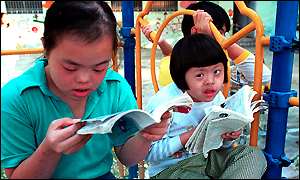
One of the key issues likely to come up during President Bill Clinton's visit to Vietnam this week is the legacy of Agent Orange, the toxic defoliant used by US forces which has been blamed for huge numbers of birth defects.
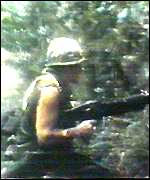 Agent Orange was used to destroy tree cover
|
During the war in Vietnam the Americans sprayed millions of gallons of Agent Orange on the country in an attempt to deny food and cover to the enemy.
To Tien Hoa is a 65 year old grandfather who spent seven years fighting against the Americans.
He was repeatedly sprayed by agent orange. "My son was born with a deformed foot and now my grandson has no legs and a deformed hand. I can confirm this is because of Agent Orange."
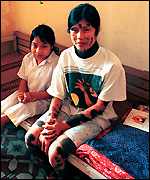 This girl's skin is covered in black spongy blotches
|
There is, however, widespread agreement the dioxin which Agent Orange contained is very dangerous.
Some parts of Vietnam, especially the sites of former US air bases where the herbicide was stored, have high concentrations of dioxin.
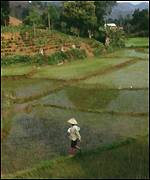 The US sprayed 20 million gallons over Vietnam
|
"Dioxin has moved from the soils to the sediment of fish ponds and into the fish themselves that are raised in the ponds for food - right up into the blood and breast milk," he added.
Clean-up
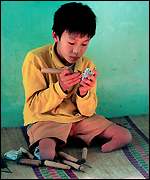 This child was born with no legs
|
"So far the Vietnamese government has not been able to do anything to clean up," said Professor Le Cao Dai, the Executive Director of the Agent Orange Victim Fund and one of Vietnam's leading experts on the issue.
To break down dioxin, affected soil has to be heated to very high temperatures - an expensive process.
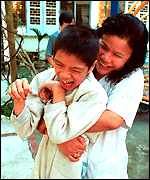 Many handicapped come from villages that were sprayed
|
In recent months the US has also, for the first time, begun to discuss the possibility of providing technical assistance for a clean-up of Agent Orange.
Pete Peterson, the US ambassador in Vietnam and a former prisoner of war during the conflict, says they are beginning a "full research effort on Agent Orange".
| Search BBC News Online |
||
Advanced search options | ||
|
| |
|
| |
|
| ||
|
Historic visit
| ||
|
Background
| ||
| ||
The BBC is not responsible for the content of external internet sites

